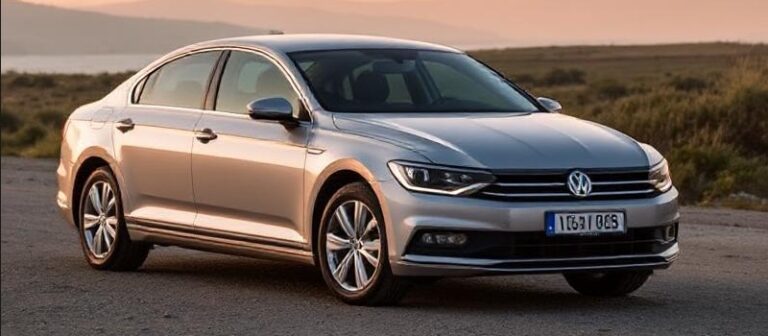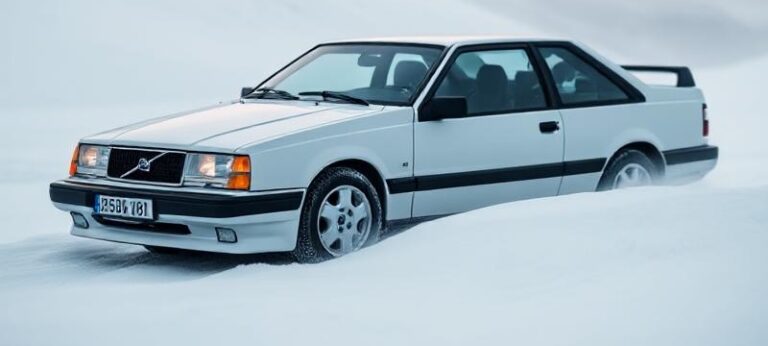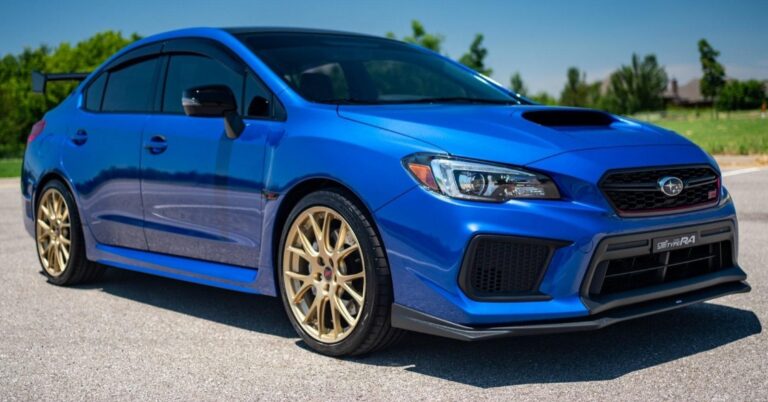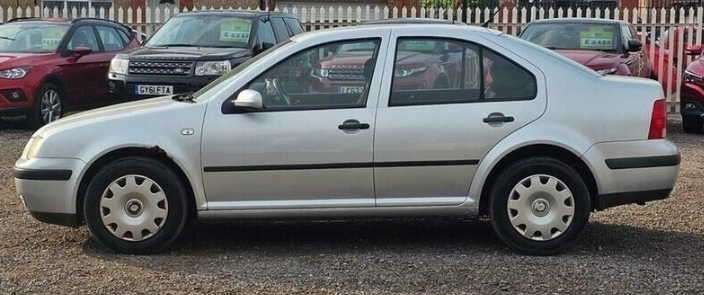The Long Goodbye: Tracing the Evolution of the Renault Safrane
The automotive landscape is often a battlefield of evolution, where generations of models rise and fall, each striving to capture the essence of a particular era and cater to the evolving needs of consumers. Among the more distinctive, albeit sometimes overlooked, contenders in the executive car segment was the Renault Safrane. Born from a desire to recapture Renault’s presence in the upper echelons of the market following the departure of the R25, the Safrane embarked on a seven-year journey, marked by a blend of ambition, innovation, and ultimately, a quiet departure. This article delves into the fascinating evolution of the Renault Safrane, exploring its production years, the diverse models and trim levels that defined its existence, and its place in Renault’s storied history.
The Genesis of an Ambition: The Safrane’s Birth (1992)
The early 1990s saw Renault seeking to bolster its executive car offering. The venerable R25, a car that garnered considerable acclaim in its time for its aerodynamic design and technological prowess, had reached the end of its production run in 1992. To fill this void and compete with established German rivals like the BMW 5 Series and Mercedes-Benz E-Class, as well as its French counterpart, the Peugeot 605, Renault conceived the Safrane.
Unveiled in February 1992, the Safrane was designed to be a more contemporary and luxurious successor to the R25. It was built on the same platform as the Volvo S80 and shared some components with the V6-powered Peugeot 605, a testament to the collaborative spirit of French and Swedish automotive engineering at the time. Its design, penned by Patrick Le Quément, was a departure from the R25’s starker, more angular lines. The Safrane boasted a more rounded, softer silhouette, with a prominent grille, a sweeping bonnet, and a distinctive C-pillar that contributed to its sophisticated, albeit somewhat understated, appearance.
.

.
Early Models and Trim Levels (1992-1996): Setting the Stage
From its inception, the Safrane aimed to offer a compelling package of comfort, technology, and performance. The initial lineup was structured to appeal to a range of buyers, with a focus on refined motoring.
- Engine Options: The Safrane was launched with a choice of petrol and diesel engines. The petrol offerings began with the 2.0 litre (RFN20) inline-four engine, producing around 107 bhp, aimed at the more budget-conscious executive buyer. Stepping up was the 2.2 litre (J7T) inline-four engine, offering a more robust 120 bhp. For those seeking greater refinement and performance, the centerpiece of the initial range was the 3.0 litre (Z7X) V6 PRV engine, a staple of Renault’s higher-end models, delivering around 163 bhp. On the diesel front, the 2.1 litre turbodiesel (J8S) provided a thrifty yet capable option, albeit with modest power output.
- Trim Levels: Renault offered the Safrane in several trim levels, each progressively adding more creature comforts and technological features. The base model, often simply referred to as the RN, provided a solid foundation with essential features. Moving up, the RT trim introduced a more comprehensive equipment list, often including features like electric windows all around, central locking, and a better sound system. For the discerning buyer, the RXE trim represented the pinnacle of the early Safrane, boasting significant enhancements such as leather upholstery, climate control, alloy wheels, and often, advanced safety features like ABS. A more performance-oriented variant, the Safrane Biturbo Quadra, also emerged early in the Safrane’s life, showcasing the brand’s engineering prowess. This limited production model featured a potent 262 bhp twin-turbo V6 engine, all-wheel drive, and a host of bespoke luxury features, positioning it as a true performance flagship, though its price point and niche appeal meant it remained a rare sight.
Mid-Life Refresh and Expanding Horizons (1996-2000): The Facelift and New Powertrains
The mid-1990s saw the automotive industry continuing to evolve, with increasing emphasis on safety, technology, and more potent, yet efficient, powertrains. In 1996, the Renault Safrane underwent a significant facelift, aiming to modernize its appearance and enhance its competitive edge.
- The Facelift: The most noticeable changes were external. The grille was subtly revised, the headlights were reshaped, and the front bumper was redesigned to give a more contemporary look. The rear end also received minor tweaks, with redesigned taillights. Inside, the cabin was improved with updated trim materials, a revised dashboard layout, and the incorporation of more advanced electronic features.
- New Engine Options: The facelift also coincided with the introduction of new and improved engine options, reflecting the changing demands of the market.
- The 2.0 litre (F4R) engine was updated, offering around 113 bhp.
- A new 2.5 litre (N7Q) inline-five engine, sourced from Volvo, was introduced, providing a smooth and refined driving experience with approximately 163 bhp. This engine became a popular choice, offering a good balance of performance and refinement.
- The 3.0 litre V6 engine also saw an upgrade, with a new 24-valve version (Z7X 24V) delivering a more potent 190 bhp.
- The diesel offerings were also enhanced. The 2.5 litre TDI (G8T), a turbodiesel direct injection engine, became available, producing around 130 bhp, offering a significant improvement in both power and economy over its predecessor.
- Revised Trim Levels: The trim structure was also refined to better align with the updated model. While the core philosophy remained, the nomenclature and specific equipment packages evolved.
- The RN designation likely continued for the entry-level models.
- The RT trim remained a popular mid-range option, often with upgraded interior features and improved sound systems.
- The RXE trim continued to represent the highest specification, often incorporating features like electric seat adjustment, a more advanced trip computer, and enhanced audio systems.
- A new, sportier trim level, the Safrane Sport, was introduced, often featuring more aggressive styling cues, sports seats, and occasionally, a more performance-tuned suspension.
- The Safrane Baccara, a nameplate synonymous with Renault’s most luxurious offerings, was re-introduced. This ultra-premium trim level elevated the Safrane to new heights of opulence, featuring extensive use of high-quality leather, burr walnut or wood-effect trim, electrically adjustable and heated seats, a premium sound system, and a host of other luxury appointments. The Baccara was designed to directly compete with the most luxurious offerings from its German rivals.
The Twilight Years and Final Editions (2000-2003): A Lingering Legacy
As the new millennium dawned, the automotive landscape continued its relentless march forward. The Safrane, though updated, was beginning to show its age against newer, more contemporary designs and integrated technologies. Renault made the decision to discontinue the Safrane, with production ceasing in 2000 in France, though some markets continued to receive the car until 2003.
During these final years, the Safrane largely carried over its established engine and trim configurations. The focus shifted towards maximizing sales of existing stock and offering value to customers. While no radical new models or trims were introduced, some minor updates to existing features and equipment might have been implemented in specific markets to maintain appeal. The flagship Baccara and the ever-popular RXE trims likely continued to be the most sought-after, representing the best of what the Safrane had to offer in its final years.
The Safrane’s Legacy: A Tale of Ambition and Compromise
The Renault Safrane’s journey was a testament to Renault’s ambition to compete in the executive saloon segment. It offered a compelling blend of comfort, sophisticated styling, and innovative features, particularly in its higher trim levels. The V6 engines, especially the later 24-valve unit, provided respectable performance, and the availability of the all-wheel-drive Biturbo Quadra showcased Renault’s engineering capabilities. The luxurious Baccara trim was a bold statement, demonstrating Renault’s desire to challenge the established luxury players.
However, the Safrane also faced significant challenges. Its design, while elegant, perhaps lacked the immediate brand cachet of its German rivals. Furthermore, Renault’s reputation in some markets for perceived reliability issues may have deterred some potential buyers from venturing into the executive segment with a French marque. The competition was fierce, and establishing a strong foothold against decades of established luxury brands proved to be an uphill battle.
Despite its relatively short production run and eventual discontinuation, the Renault Safrane carved out a niche for itself. It represented a significant effort by Renault to produce a sophisticated and capable executive car. Today, Safranes are often found as appreciating modern classics, cherished by enthusiasts who value their comfortable ride, distinctive styling, and the unique blend of French flair and robust engineering they represent. The Safrane’s story is one of an ambitious endeavor, a car that aimed for the stars and, while perhaps not reaching its ultimate destination, left a memorable mark on Renault’s illustrious history.







